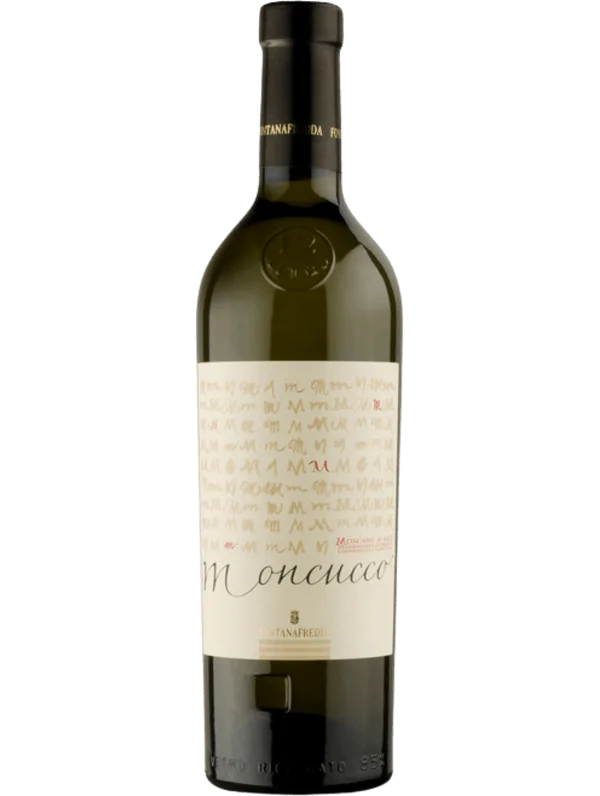
Moscato d'Asti
Sweet, lightly fizzy, low alcohol. Like eating Muscat grapes under a vine. Perfect to pair with fruit tart.
Read more
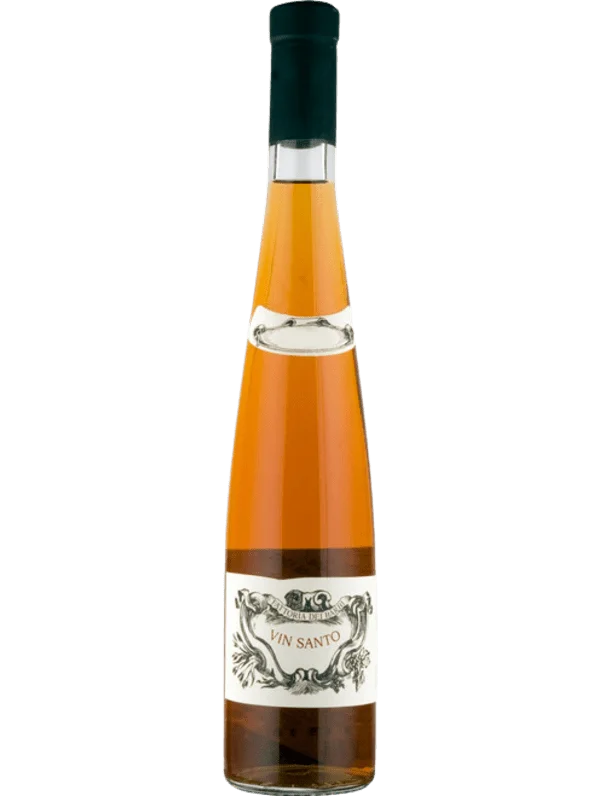
Vin Santo DOC
Grapes dried on straw mats. Dried fruits, orange peel, nutty palate. Long finish. Try with biscotti or ice cream.
Read more
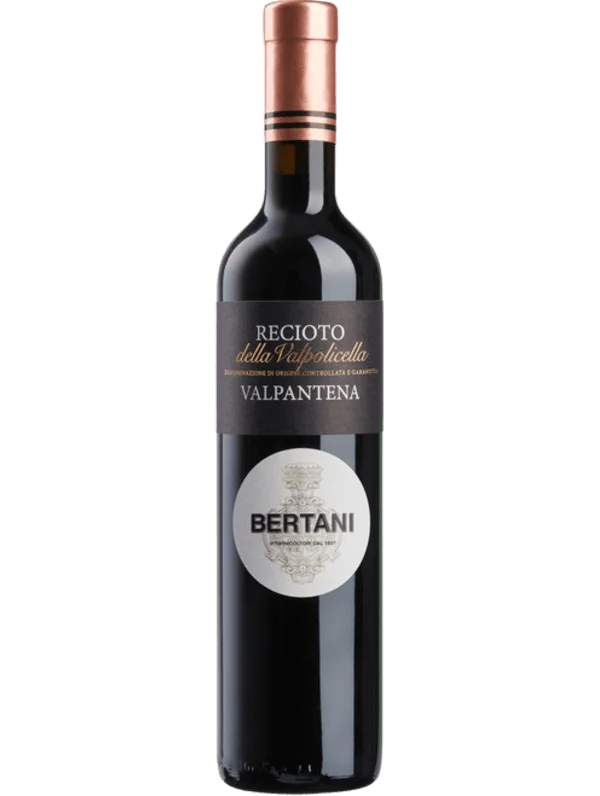
Recioto della Valpolicella DOC
Plum, cherry, raspberry, spices, vanilla, cocoa. Intense and opulent. Enjoy with chocolate lava cake.
Read more
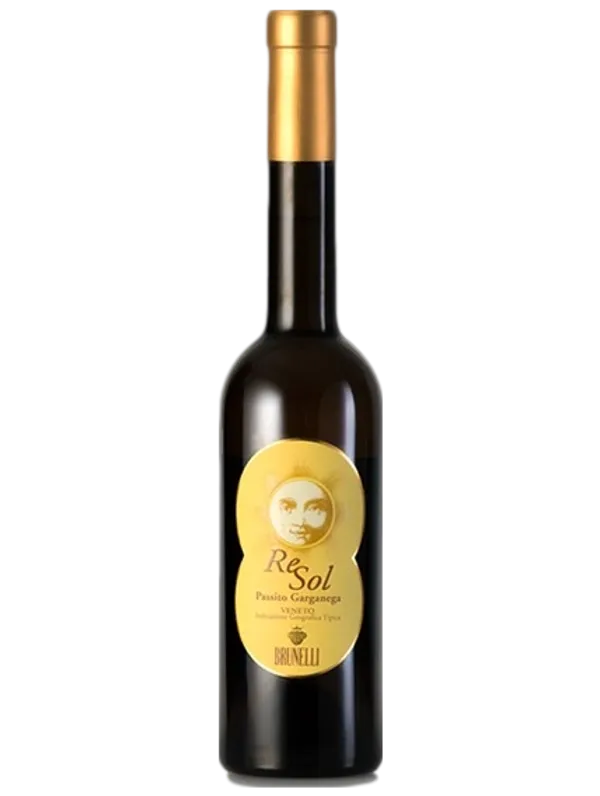
Brunelli Resol Passito Garganega
Luscious golden, honey and apricot notes, harmoniously sweet, perfect with desserts or aged cheese.
Read more
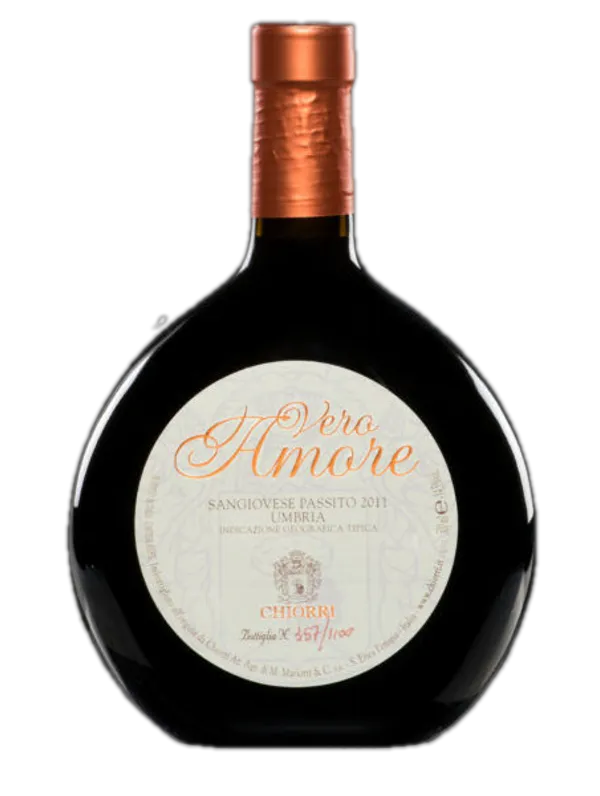
Chiorri Vero Amore Sangiovese Passito
A fresh and sweet Umbrian delight, ideal with fruit cakes or as a festive gift, matured in French barrels.
Read more
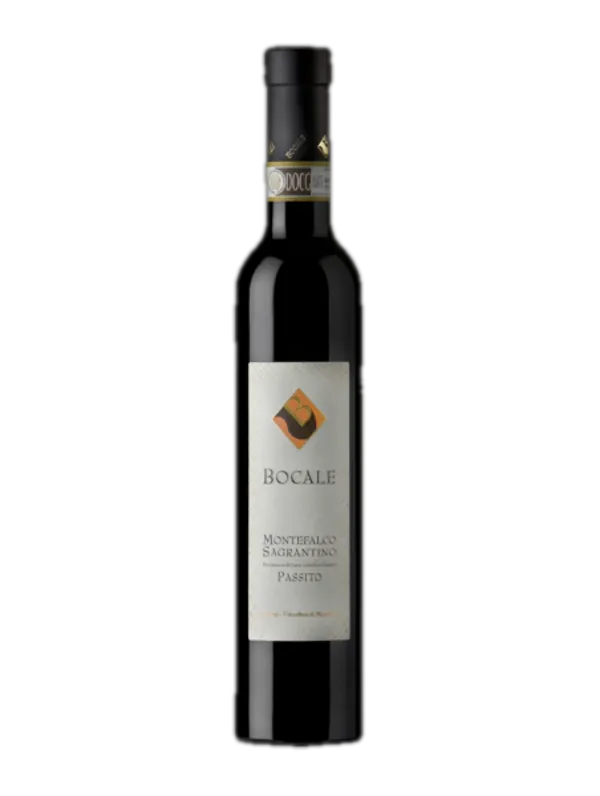
Bocale Montefalco Sagrantino Passito
Rich, aromatic blackberry and currant flavors, aged in barrique, perfect for meditation or with ripe cheese.
Read more
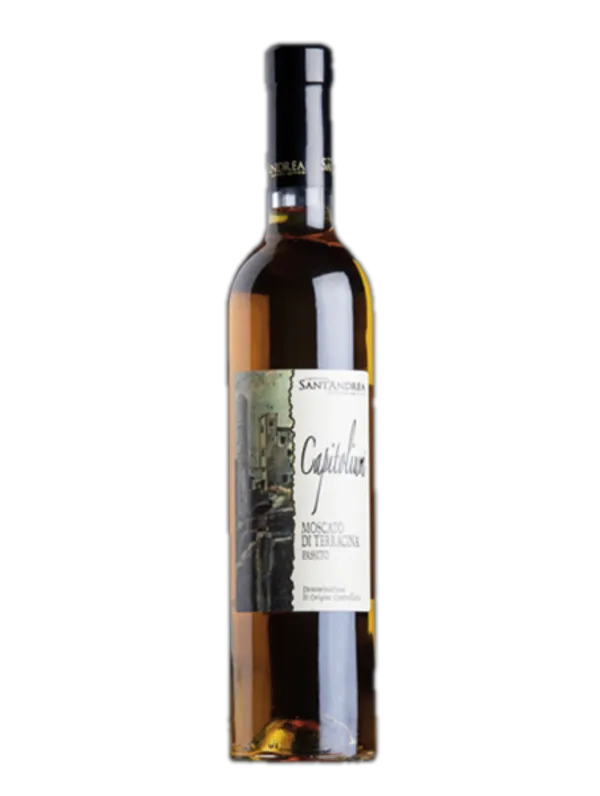
Cantina Sant’Andrea Capitolium Moscato di Terracina Passito
Luscious sweet Moscato from Lazio. Floral aromas, honeyed palate. Ideal for desserts. Cantina Sant’Andrea.
Read more
Italian Regions Famous for Sweet Wine
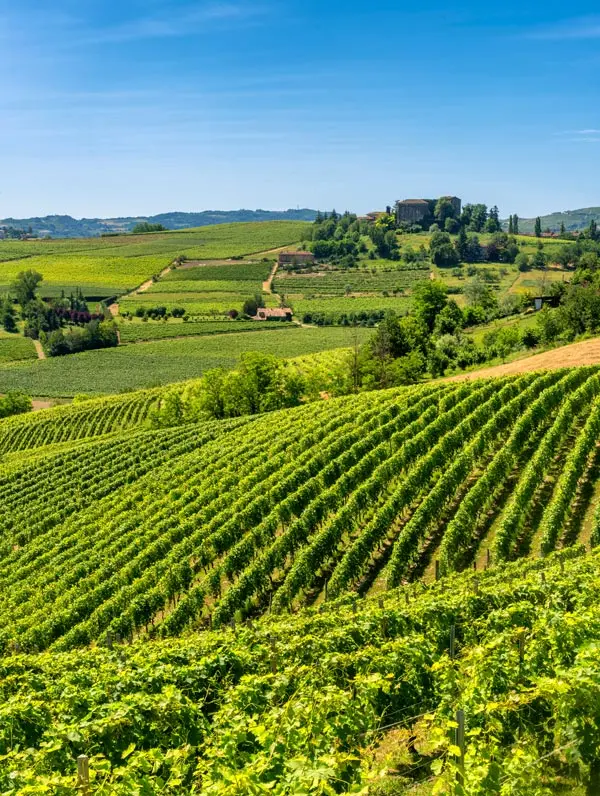
Piedmont
This North Western region makes some of Italy’s most refreshing sweet wines.
Read more

Veneto
Home to some exceptional sweet wines, such as Recioto della Valpolicella.
Read more
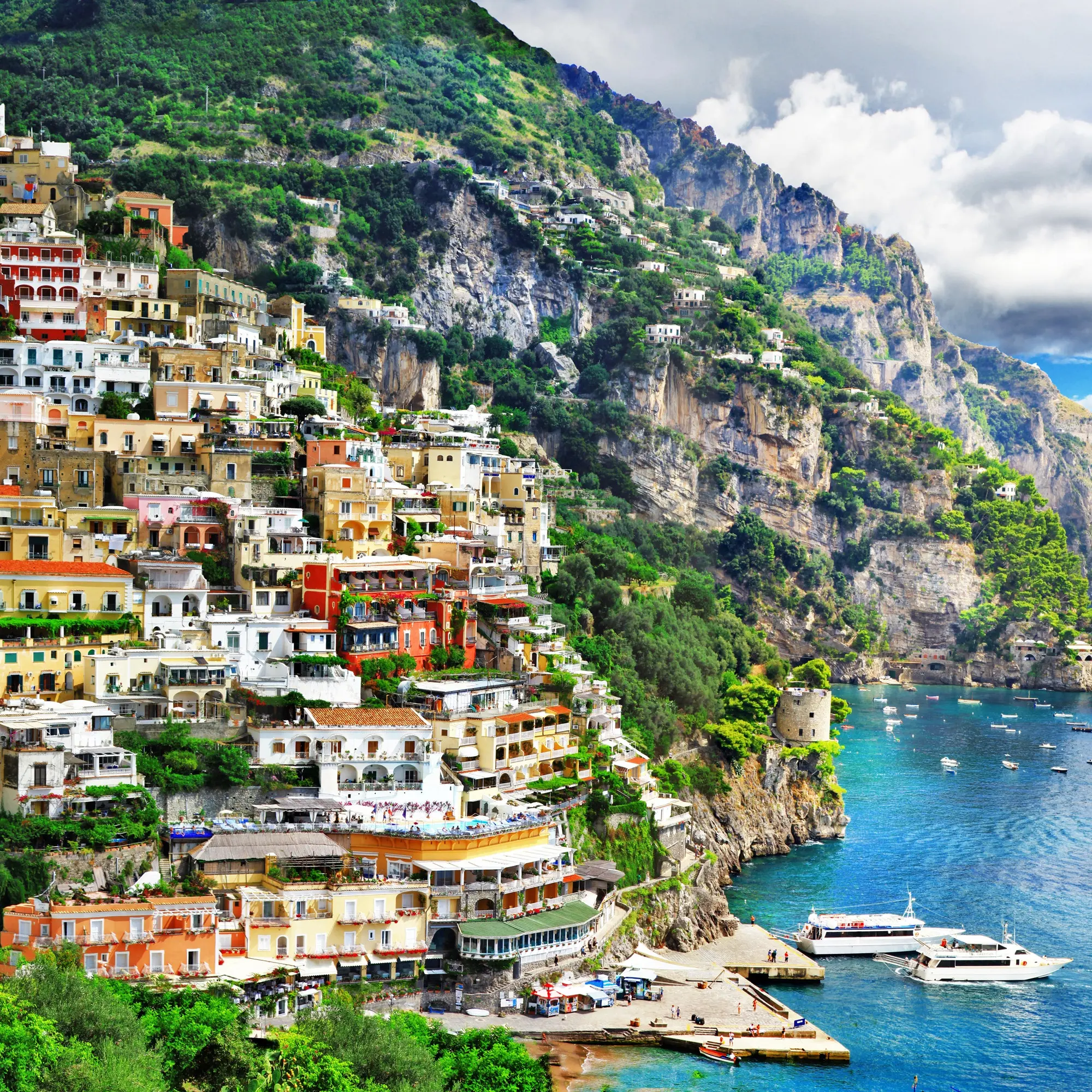
Tuscany
Tuscany is famous for passito wines such as Vin santo and Aleatico.
Read more
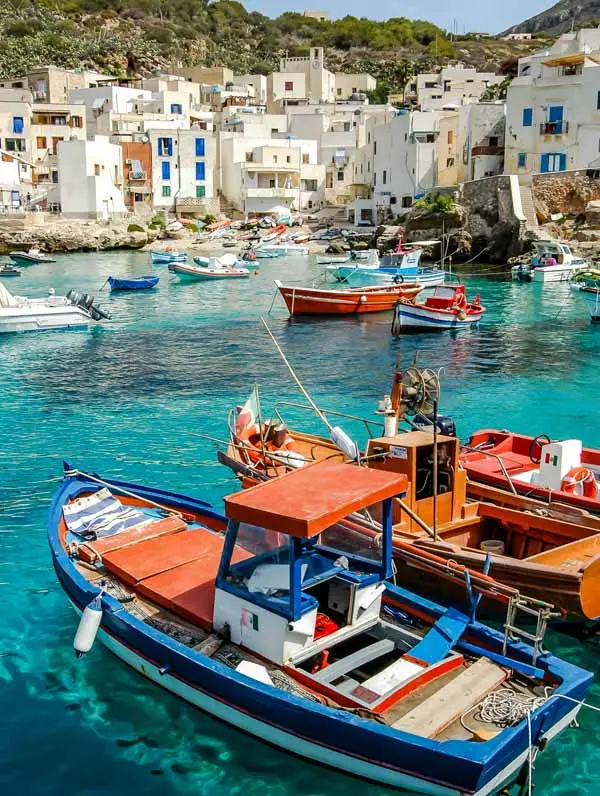
Sicily
Sicily’s climate lends a richness to their dessert wines including the renowned Passito di Pantelleria.
Read more

Marche
Home to the rare sweet wine Visciole, made from sour cherries, spices and grape must.
Read more
Pairing Food with Italian Sparkling Wine
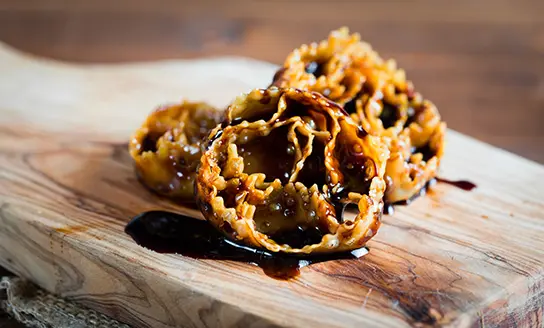
Dessert: Cartellate
an ideal way to finish your meal. Cartellate are deep-fried pastries soaked in honey. As with most local desserts, a raisin wine represents the perfect pairing. In this case, we recommend a bottle of Matera Primitivo Passito.
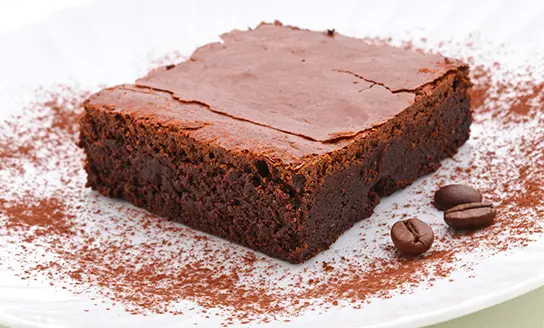
Dessert: Torta Barozzi
a dessert originally from Modena, made with almonds, cocoa and coffee - its authentic recipe is still a secret.

Dessert: Seadas
The quintessential Sardinian dessert: sweet pastries, filled with pecorino and lemon zest, which are then deep-fried and served with delicious honey on top.

Dessert: Granita and brioche
Granita is a frozen dessert made of water and ice, with tons of flavour options and often served with a fresh-baked brioche on the side.
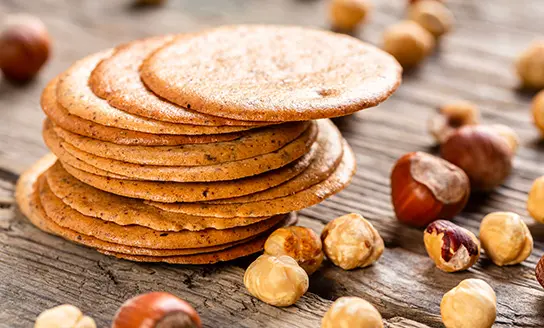
Dessert: Tegole
Delicious biscuits made with hazelnuts, almonds, and vanilla. A bottle of Muscat is the wine that best suits this dessert.
Sweet wines, of course, pair best with sweet foods. But it’s more nuanced than that; not all desserts will pair well with all sweet wines. There are three key factors to consider when picking the right wine: acidity, intensity and sweetness. Sweet wines also pair well with savoury foods. The sweetness balances spicy foods such as Chinese, Thai or Indian dishes. Finally, they also pair very well with cheese. Aged and blue cheeses work especially well, creating a sweet and salty combination that’s hard not to love.
Want to know it all?
What makes Italian sweet wine so great?
Italian sweet wines are very diverse. Every Italian region boasts its own unique dessert wine with individual character, made from a wide range of grape varieties and often with age-old winemaking traditions.
Italy is known for its passito method. This involves drying some or all of the grapes before fermentation which concentrates aromatics and sweetness. The result is a wine with extraordinary complexity and concentration.
Noteworthy Italian Sweet Wines
-
Brachetto d'Acqui [bra-ket-to-dee-ah-kwee]
This is a semi-sparkling and bright pink wine from the Piedmont region. It is made with the native Brachetto grape. The wine is frothy and bright, with floral notes and plenty of candied fruit flavors. It’s a perfect match with chocolate desserts.
-
Moscato d’Asti [mos-ka-to-dee-ah-stee]
Also from the Piedmont region, Moscato d’Asti is a popular sweet sparkling wine made with Moscato Bianco. This grape is one of the oldest in the area, loved for its bright citrus and honeyed flavours.
-
Recioto alla Valpolicella [reh-cho-to-ah-la-val-poll-lee-chell-ah]
This wine is the sweeter cousin to the famous Amarone della Valpolicella. Made in Valpolicella, it is produced using the appassimento method of drying the grapes, which concentrates Recioto’s sweetness and dark berry flavors. The result is a full-bodied and bold sweet wine with subtle sweet and spicy notes.
-
Vin Santo [veen-sahn-to]
Vin Santo means ‘holy wine’ and is Tuscany’s iconic dessert wine. Made with dried Trebbiano and Malvasia grapes, the grape bunches are hung up in a dark and cool place for months. This process creates a super nutty and caramel-like dessert wine. Traditionally, Vin Santo is enjoyed with local biscotti (cantucci) which are dunked straight into the wine.
-
Passito di Pantelleria [pas-see-to-dee-pahn-tell-leh-ree-ah]
The small, yet abundant island of Pantelleria makes one of Italy’s most impressive sweet wines. This island, just off the coast of Sicily, has a hot climate which produces some very concentrated grapes. The variety used is Zibibbo (also known as Moscato d’Alessandria). The grapes are dried which makes the resulting wine very aromatic. Passito di Pantelleria has a beautiful golden amber colour accompanied with a powerful perfume of dried fruits.
Sweet Wine Regions in detail
-
North West
This area is home to some of Italy’s oldest grape varieties and winemaking traditions. The Alps just to the North, and the Mediterranean sea breezes, create perfect winemaking conditions. Piedmont is the most esteemed winemaking region in the North West and produces some stellar sweet wines. The small province of Asti makes the lively Moscato d’Asti. Alessandria is home to the ancient grape Brachetto which is responsible for a gorgeously fizzy sweet pink wine. The North West’s key sweet wine regions are Piedmont and Liguria.
-
North East
This expansive area creates some exemplary sweet wines. It is very mountainous, whose slopes contribute to some exceptional vineyards. The area serves the thirsty wine drinkers that congregate in Milan and Venice. It is home to the impeccable viticulture zone of Valpolicella. This area makes bold and famous wines like Amarone della Valpolicella. Recioto della Valpolicella is its sweeter relative, with an even more intense character. The North East’s key sweet wine regions are Veneto and Fruili-Venezia Giulia.
-
Central
The central Italian area extends from the southern end of the Emilia Romagna down to the region of Lazio. The rich soils produce some excellent sweet wines. In particular, Tuscany uses local Trebbiano and Malvasia grapes to make its ‘holy wine’, Vin Santo. There are also beautiful islands off the coast with their own grape varieties. Elba, off the Western coast of Tuscany, has been making wine since Napoleonic times. The Central area’s key sweet wine regions are Tuscany and Emilia Romagna.
-
South & Islands
The South of Italy has a dry Mediterranean climate and is home to ancient grape varieties. The area also has some stunning islands, the largest and most famous being Sicily. There, the famous sweet fortified wine Marsala is produced. There is also Passito di Pantelleria, made on a tiny island just off the coast of Sicily. The South and Italian islands' key sweet wine regions are Sicily and Pantelleria.
FAQS
What is a good sweet wine for beginners?
A great sweet wine for beginners is Brachetto d’Acqui. It is a very easy-going wine that can be enjoyed before or after a meal. Also try Moscato d’Asti, which is sparkling dessert wine, low in alcohol.
What is the most popular Italian Sweet Wine?
Moscato d’Asti. Not too sweet, it is lightly sparkling wine that pairs wonderfully with a large variety of desserts or can easily be enjoyed by itself at the end of a meal.
What is the most expensive Italian dessert wine?
Niche productions of the Tuscan Vin Santo, are known to be quite expensive. Vin Santo represents excellence in Tuscan winemaking. Perfectly balanced with a creamy finish, it pairs wonderfully with cantucci - Tuscan biscotti - which are directly dipped into the wine.
Is sweet wine bad for you?
Sweet wines are high in sugar so they are best consumed in moderation.
What is the best sweet wine to drink?
There are a plethora of delicious sweet wines. If you prefer light and sparkling wines, try Moscato d’Asti. If you prefer something more concentrated and full-bodied, Recioto alla Valpolicella may be the one for you.
What is the best sweet Moscato wine?
Moscato d’Asti. This wine is produced exclusively in the area of Asti, in the Piedmont region. It has beautiful floral and honey flavours.
What makes Italian sweet wine unique?
The traditional passito method. This involves drying the grapes prior to vinification, resulting in a wine that is more flavourful and sweet.
